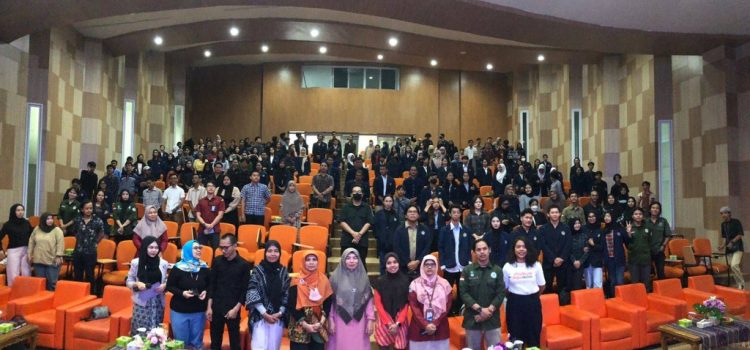
Climate change is becoming increasingly tangible in Indonesia — from annual floods and prolonged droughts to rising sea levels and extreme weather that threaten food security. Although Indonesia’s carbon emissions account for only around 1.3% of global totals, the impact is disproportionately large due to the country’s geographical and social vulnerability.
In the midst of these challenges, the role of young people — especially millennials and Gen Z — is crucial. They live in a digital era, are highly connected to technology, and see social media as their main space to learn, discuss, and take action.
Recent research shows that social media has evolved far beyond entertainment; it has become a key platform for climate campaigning. Young Indonesians use digital platforms to share information, build communities, and mobilize real-world action. Yet, their engagement patterns are complex, shaped by social, cultural, and informational factors.
The Main Stage of Climate Campaigns
Survey data reveals that Instagram has become the primary arena for climate discussions among young Indonesians. Forty-one percent of respondents identified it as their main platform, far surpassing WhatsApp (18%), Facebook (13%), Twitter (11%), YouTube (8%), LinkedIn (6%), and TikTok (4%).
Why is Instagram so dominant? There are several reasons.
First, its visual nature makes complex issues like climate change easier to understand through photos, infographics, and short videos.
Second, peer influence plays a strong role — 31% of respondents said they use Instagram because their friends are active there.
Third, Instagram frequently features eco-friendly campaigns that resonate with young users.
Public figures also play an important part. Celebrities such as Nicholas Saputra, Nadya Hutagalung, Nadine Chandrawinata, and Hamish Daud were often mentioned as role models who inspired interest in environmental issues. Their presence amplifies the reach of climate messages and provides real-life figures young people can look up to.
However, there’s an important caveat: despite the lively online climate discussions, engagement with experts or scientists remains minimal. Out of 85 respondents, only five had ever discussed climate change directly with an expert online. Instead, 40% talked about it with friends, 25% with colleagues, and 16% with family members. This shows that most climate conversations remain informal and socially driven, rather than grounded in scientific knowledge.
From Digital Awareness to Real-World Action
Social media offers several key advantages. Over 50% of respondents said digital platforms make it easier to engage directly with audiences; 48% believe they accelerate information dissemination; and 40% think online campaigns encourage real-world action.
It’s no surprise, then, that many young Indonesians who encounter climate content on Instagram or WhatsApp begin taking small but meaningful steps — reducing single-use plastics, conserving electricity, donating for disaster relief, or joining community tree-planting initiatives.
Yet, these benefits come with challenges. Misinformation is the most significant threat — over 70% of respondents expressed concern about fake or misleading climate content. Another issue is “slacktivism,” where individuals feel satisfied by simply liking or sharing posts without any real follow-up action. Some also admitted that social media distractions, mixed with entertainment content, dilute their focus on environmental issues.
Interestingly, nearly half of respondents prefer offline discussions — through community meetings, campus forums, or environmental seminars. They feel face-to-face interactions provide deeper learning and real exchanges of experience. This suggests that effective climate campaigns cannot rely solely on social media, but must combine online and offline approaches to strengthen impact.
Recommendations: Connecting Online Energy with Real-World Change
The research offers several key recommendations:
-
Focus campaigns on Instagram and WhatsApp, as these are the most widely used platforms among young Indonesians.
-
Engage public figures and influencers to expand message reach and visibility.
-
Encourage scientists and experts to communicate in simpler, more accessible language for broader understanding.
-
Integrate online and offline strategies to turn digital awareness into sustained, real-world action.
By aligning these strategies, the energy of Indonesia’s youth can be channeled not just into creating viral moments, but into driving tangible environmental change.
Social media alone may not be the ultimate solution — but it remains an effective entry point to foster climate consciousness among Indonesia’s millennials and Generation Z.
Author: Mohammad R., Gemawan Activist
Source: Adinur Zein et al. (2024), “Social Media Use for Climate Change Campaign among Indonesian Millennials.”
